French Society During the Late Eighteenth Century
- Books Name
- Learn with me Social Science Book
- Publication
- Learn with me publication
- Course
- CBSE Class 9
- Subject
- Social Science
The French Revolution
- The outbreak of the French Revolution
- Changes after Revolution
- Classes of French Societies
- Facts about Napoleon, the former emperor of France.
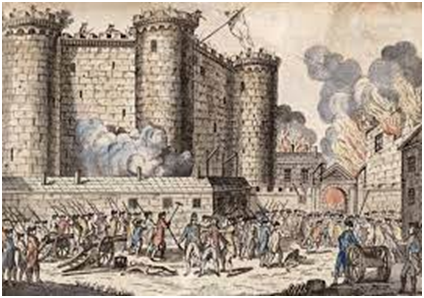
The French Society during the Late 18th Century-
The French Society comprised :
1st Estate: Clergy
2nd Estate: Nobility
3rd Estate: Big businessmen, merchants, court officials, peasants, artisans, landless laborers, servants, etc.Some within the Third Estate were rich and some were poor.
The burden of financing activities of the state through taxes was borne by the Third Estate alone.
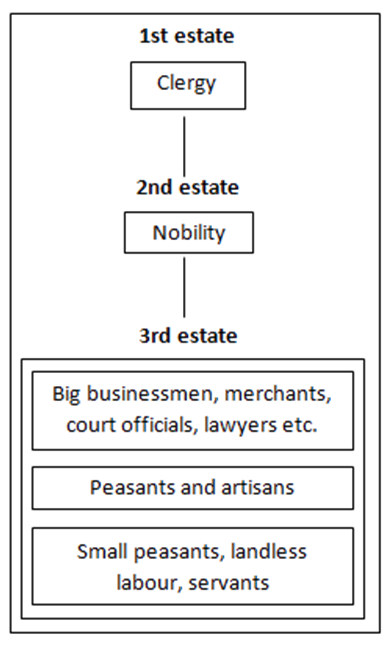
The Struggle for Survival: Population of France grew and so did the demand for grains. The gap between the rich and poor widened. This led to subsistence crises.
The Growing Middle Class: This estate was educated and believed that no group in society should be privileged by birth. These ideas were put forward by philosophers such as Locke the English philosopher and Rousseau the French philosopher. The American Constitution and its guarantee of individual rights was an important example of political theories of France. These ideas were discussed intensively in salons and coffee houses and spread among people through books and newspapers
Time Line: The French Revolution
1770s-1780s: Economic decline: French Government in deep debt. In 1774, Louis XVI ascends to the throne.
1788-1789: Bad harvest, high prices, food riots.
1789, May 5: Estates-General convened, demands reforms.
1789, July 14: National Assembly formed. Bastille stormed on July 14. French Revolution starts.
1789, August 4: Night of August 4 ends the rights of the aristocracy, the surrender of feudal rights.
1789, August 26: Declaration of the Rights of Man
1790: Civil Constitution of the Clergy nationalizes the Church.
1791: Dissolution of the National Constituent Assembly.
1792: Constitution of 1791 converts absolute monarchy into a constitutional monarchy with limited powers.
1792: Austria and Prussia attack revolutionary France, Robespierre, elected the first Deputy for Paris to the National convention.
1793: Louis XVI and Marie Antoinette were executed.
1792-1794: In 1793, the Reign of Terror starts. Austria, Britain, the Netherlands, Prussia, and Spain are at war with France.
Robespierre’s Committee of Public Safety repels back foreign invaders.
Executes many ‘enemies of the people’ in France itself.
1794: Robespierre is executed. France is governed by a Directory, a committee of five men. The Reign of Terror ends.
1795: National convention dissolved.
1799: Napoleon Bonaparte becomes the leader of the French Revolution ends.
Women’s Revolution
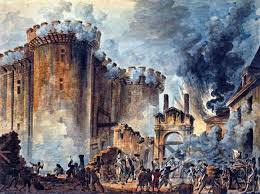
- From the very beginning, women were active participants in the events which brought about so many changes in French society.
- Most of the women of the third estate had to work for a living.
- Their wages were lower than those of men.
- They demanded equal pay for equal work.
- In order to discuss and voice their interests, women started their own political clubs and newspapers.
- One of their main demands was that women must enjoy the same political rights as men.
- Women were disappointed that the Constitution of 1791 reduced them to passive citizens.
- They demanded the right to vote, to be elected to the Assembly and to hold political office
- Together with the creation of state schools, schooling was made compulsory for all girls. Their fathers could no longer force them into marriage against their will. Marriage was made into a contract entered into freely and registered under civil law.
- Divorce was made legal, and could be applied for by both women and men.
- Women could now train for jobs, could become artists or run small businesses. Women’s struggle for equal political rights.
- During the Reign of Terror, the new government issued laws ordering closure of women’s clubs and banning their political activities. Many prominent women were arrested and a number of them executed. Women’s movements for voting rights and equal wages continued through the next two hundred years in many countries of the world. The fight for the vote was carried out through an international suffrage movement during the late nineteenth and early twentieth centuries. The example of the political activities of French women during the revolutionary years was kept alive as an inspiring memory. It was finally in 1946 that women in France won the right to vote.
- Some laws were introduced to improve the position of women.
- Their struggle still continues in several parts of the world.
It was finally in 1946 that women in France won the right to vote
France Abolishes Monarchy and Becomes a Republic
- Books Name
- Learn with me Social Science Book
- Publication
- Learn with me publication
- Course
- CBSE Class 9
- Subject
- Social Science
The Abolition of Slavery
- The most revolutionary social reforms of the Jacobin regime was the abolition of slavery in the French colonies.
- Reluctance of Europeans to go and work in distant and unfamiliar lands meant a shortage of labour on the plantations.
- This was met by a triangular slave trade between Europe, Africa and the Americas.
- The slave trade began in the seventeenth century.
- The slaves were packed tightly into ships for the three-month long voyage across the Atlantic to the Caribbean. There they were sold to plantation owners.
- Port cities like Bordeaux and Nantes owed their economic prosperity to the flourishing slave trade.
- It was finally the Convention which in 1794 legislated to free all slaves in the French overseas possessions.
- Ten years later, Napoleon reintroduced slavery. Plantation owners understood their freedom as including the right to enslave African Negroes in pursuit of their economic interests.
- Slavery was finally abolished in French colonies in 1848.
The Revolution and Everyday Life
- The years following 1789 in France saw many changes in the lives of men, women, and children.
- The revolutionary governments took it upon themselves to pass laws that would translate the ideals of liberty and equality into everyday practice.
- One important law that came into effect was the abolition of censorship.
- Now the Declaration of the Rights of Man and Citizen proclaimed freedom of speech and expression to be a natural right.
- Newspapers, pamphlets, books and printed pictures flooded the towns of France from where they travelled rapidly into the countryside.
- Freedom of the press also meant that opposing views of events could be expressed.
- The ideas of liberty and democratic rights were the most important legacy of the French Revolution. These spread from France to the rest of Europe during the 19th century.
Napoleon
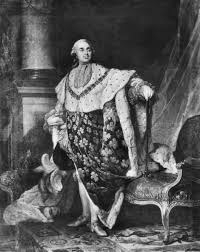
- In 1804, Napoleon crowned himself emperor of France.
- He set out to conquer neighboring European countries, dispossessing dynasties and creating kingdoms where he placed members of his family.
- He saw his role as a modernizer of Europe.
- He introduced many laws (the protection of private property and a uniform system of weights and measures provided by the decimal system).
- He was finally, defeated at Waterloo in 1815.
Age of Social Change
- Books Name
- Learn with me Social Science Book
- Publication
- Learn with me publication
- Course
- CBSE Class 9
- Subject
- Social Science
The Age of Social Change
- After the revolution, individual rights and social power began to be discussed in many parts of the world including Europe and Asia.
- Colonial development reshaped ideas of societal change but everyone was not in favour of the complete transformation of society.
- Through the revolution in Russia, socialism became one of the most significant and powerful ideas to shape society in the twentieth century.
Liberals, Radicals and Conservatives
- Liberals wanted a nation which tolerated all religions. They opposed uncontrolled power of dynastic rules and argued for a representative, elected parliamentary government, subject to laws interpreted by a well-trained judiciary that was independent of rulers and officials.
- They wanted a government based on the majority of a country’s population. Conservatives, after the nineteenth century, accepted changes but also believed the past needed to be respected and change should begin slowly.
Industrial Society and Social Change
- Industrial Revolution led to changes in social and economic life, new cities came up and new industrialised regions developed. Men, women and children came to factories in search of work. But, unfortunately, working hours were long and wages were poor.
- There was unemployment during the time of low demand for industrial goods. Liberals and radicals made wealth through trade or industrial ventures.
- According to them, society can be developed if freedom of individuals was ensured, if the poor could labour, and those with capital could operate without restraint.
- In France, Italy, Germany and Russia, revolutionaries overthrow existing monarchs. Nationalists talked of revolutions to create ‘nations’ with equal rights.
The Coming of Socialism to Europe
- Socialism was a well-known body of ideas by the mid-nineteenth century in Europe. Socialists were against private property and saw it as the root of all social ills of the time.
- They wanted to change it and campaigned for it. Robert Owen (1771-1858) sought to build a cooperative community called New Harmony in Indiana (USA).
- Louis Blanc (1813-1882) wanted the government to encourage cooperatives and replace capitalist enterprises.
- Karl Marx (1818-1883) and Friedrich Engels (1820-1895) added other ideas to this body of arguments. According to Marx industrial society was ‘capitalist’ who owned the capital invested in factories, and the profit of capitalists was produced by workers.
- Capitalism and the rule of private property were overthrown. Marx believed that a communist society was the natural society of the future.
Support for Socialism
- By the 1870s, socialist ideas spread through Europe and they formed an international body – namely, the Second International. Associations were formed by workers in Germany and England to fight for better living and working conditions.
- The Labour Party and Socialist Party were formed by socialists and trade unionists, by 1905.
The Russian Revolution
- Books Name
- Learn with me Social Science Book
- Publication
- Learn with me publication
- Course
- CBSE Class 9
- Subject
- Social Science
The Russian Revolution
In the October Revolution of 1917, socialists took over the government in Russia. The fall of monarchy in February 1917 and the events of October were termed as the Russian Revolution.
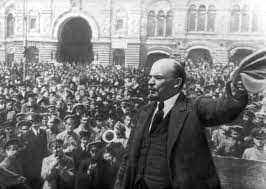
The Russian Empire in 1914
- In 1914, Russia was ruled by Tsar Nicholas II and its empire. The Russian Empire included current-day Finland, Latvia, Lithuania, Estonia, parts of Poland, Ukraine and Belarus, stretching to the Pacific and comprised today’s Central Asian states, as well as Georgia, Armenia and Azerbaijan.
- Majority of the population was Russian Orthodox Christianity.
Economy and Society
- At the beginning of the twentieth century, Russian population was dominated by agriculturalists, who used to cultivate for the market as well as for their own needs. St Petersburg and Moscow were prominent industrial areas.
- Craftsmen undertook much of the production, but large factories existed alongside craft workshops. In the 1890s more factories were set up after and foreign investment in industry increased.
- Large factories were supervised by the government to ensure minimum wages and limited hours of work. Workers were a divided social group.
- They were also divided by their skill. Despite divisions, workers united to stop work when they disagreed with employers about dismissals or work conditions.
- Peasants cultivated most of the land but the nobility, the crown and the Orthodox Church owned large properties.
- Nobles got power and position through their services to the Tsar. In Russia, peasants wanted the land of the nobles.
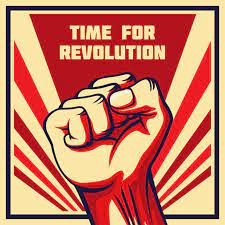
Socialism in Russia
- Political parties in Russia were legal before 1914. In 1898, socialists founded the Russian Social Democratic Workers Party who respected Marx’s ideas.
- Some Russian socialists felt that the Russian peasant custom of dividing land periodically made them natural socialists. Throughout the nineteenth century, socialists were active in the countryside and formed the Socialist Revolutionary Party in 1900.
- The party struggled for peasants’ rights and demanded land belonging to nobles be transferred to peasants. The party was divided over the strategy of organisation.
- According to Vladimir Lenin in a repressive society like Tsarist Russia, the party should be disciplined and should control the number and quality of its members. Mensheviks thought that the party should be open to all.
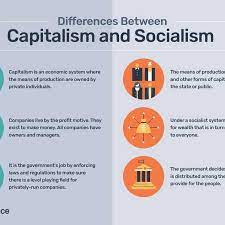
A Turbulent Time: The 1905 Revolution
- Russia was an autocracy and even at the beginning of the twentieth century, the Tsar was not subject to Parliament.
- During the Revolution of 1905, Russia along with the Social Democrats and Socialist Revolutionaries, worked with peasants and workers to demand a constitution.
- For Russian workers, bad times started from the year 1904 as prices of essential goods rose and their real wages declined by 20 per cent.
- Workers went on strike demanding a reduction in the working day to eight hours, an increase in wages and improvement in working conditions.
- The procession was attacked by the police and the Cossacks when it reached the Winter Palace. The incident, known as Bloody Sunday, started a series of events which resulted in the 1905 Revolution.
- During the 1905 Revolution, the Tsar allowed the creation of an elected consultative Parliament or Duma. After 1905, most committees and unions worked unofficially, since they were declared illegal.
The First World War and the Russian Empire
- In 1914, war broke out between two European alliances – Germany, Austria and Turkey (the Central powers) and France, Britain and Russia (later Italy and Romania). This was the First World War.
- The war became popular and as it continued, the Tsar refused to consult the main parties in the Duma. Support wore thin.
- The First World War was different on the easter front and on the western front. Between 1914 and 1916 Russian army lost badly in Germany and Austria.
- Russian army destroyed crops and buildings to prevent the enemy from being able to live off the land. The country was cut off from other suppliers of industrial goods by German control of the Baltic Sea. railway lines began to break down by 1916.
- For the people in the cities, bread and flour became scarce. By the winter of 1916, riots at bread shops were common.
February Revolution in Petrograd
- Books Name
- Learn with me Social Science Book
- Publication
- Learn with me publication
- Course
- CBSE Class 9
- Subject
- Social Science
The February Revolution in Petrograd
- Petrograd city is divided among its people. On the right bank of the River Neva workers quarters and factories were located and on the left bank located fashionable areas such as the Winter Palace and official buildings.
- Food shortages deeply affected the workers’ quarters. On the right bank, a factory was shut down on February 22. Women also led the way to strikes and it is called International Women’s Day.
- The government imposed a curfew as the fashionable quarters and official buildings were surrounded by workers. Duma was suspended on 25th February.
- The streets thronged with demonstrators raising slogans about bread, wages, better hours and democracy. The government called out the cavalry but they refused to fire on the demonstrators.
- Soldiers and striking workers gathered to form a ‘soviet’ or ‘council’ in the same building as the Duma met and it is termed as the Petrograd Soviet.
- Soviet leaders and Duma leaders formed a Provisional Government to run the country. Russia’s future would be decided by a constituent assembly, elected on the basis of universal adult suffrage.
- Petrograd had led the February Revolution that brought down the monarchy in February 1917.
After February
- Under the Provisional Government, army officials, landowners and industrialists were influential. Liberals and socialists worked towards an elected government.
- Restrictions on public meetings and associations were removed. In April 1917, the Bolshevik leader Vladimir Lenin returned to Russia from his exile. Lenin demanded three things termed as ‘April Theses’.
- He wanted war to end, land to be transferred to the peasants and banks to be nationalised. He also emphasised on renaming the Bolshevik Party to the Communist Party.
- Workers movement spread throughout the summer. Factory committees formed and trade unions grew in numbers. When the Provisional Government saw its power reduced and Bolshevik influence grew, they decided to take stern measures against the spreading discontent. In the countryside, peasants and their Socialist Revolutionary leaders pressed for a redistribution of land.
- Encouraged by the Socialist Revolutionaries, peasants seized land between July and September 1917.
The Revolution of October 1917
- The conflict between the Provisional Government and the Bolsheviks grew. On 16 October 1917, Lenin persuaded the Petrograd Soviet and the Bolshevik Party to agree to a socialist seizure of power.
- To organise the seizure, a Military Revolutionary Committee was appointed by the Soviet under Leon Trotskii. The Military Revolutionary Committee ordered its supporters to seize government offices and arrest ministers.
- By nightfall, the city was under the committee’s control and the ministers had surrendered. At a meeting of the All Russian Congress of Soviets in Petrograd, the majority approved the Bolshevik action.
What Changed after October?
- Industry and banks were nationalised in November 1917 which meant that the government took over ownership and management.
- Land was declared as social property and peasants were allowed to seize the land of the nobility.
- The Bolshevik Party was renamed the Russian Communist Party (Bolshevik). Elections were conducted in November 1917, to the Constituent Assembly, but they failed in majority. In January 1918, the Assembly rejected Bolshevik measures and Lenin dismissed the Assembly. Despite opposition, in March 1918, the Bolsheviks made peace with Germany at Brest Litovsk.
- The Bolsheviks participated in the elections to the All Russian Congress of Soviets, which became the Parliament of the country. Russia became a one-party state. After October 1917, this led to experiments in the arts and architecture.
- But many became disillusioned because of the censorship the Party encouraged.
The Civil War
- The Russian Army broke up and their leaders moved to south Russia and organised troops to fight the Bolsheviks (the ‘reds’).
- During 1918 and 1919, the Russian Empire was controlled by the ‘greens’ (Socialist Revolutionaries) and ‘whites’ (pro-Tsarists) backed by French, American, British and Japanese troops
- These troops and the Bolsheviks fought a civil war. By January 1920, the Bolsheviks controlled most of the former Russian empire.
- In the name of defending socialism, Bolshevik colonists brutally massacred local nationalists. Most non-Russian nationalities were given political autonomy in the Soviet Union (USSR) – the state the Bolsheviks created from the Russian empire in December 1922.
Making a Socialist Society
- During the civil war, industries and banks kept nationalised. Peasants were permitted to cultivate the land. Centralised planning process was introduced.
- Officials worked on how the economy will work and set targets for a five-year period. During the first two ‘Plans’ the government fixed all prices to promote industrial growth (1927-1932 and 1933-1938).
- Centralised planning led to economic growth. But, rapid construction led to poor working conditions. Schooling system developed, and arrangements were made for factory workers and peasants to enter universities.
- For women workers, crèches were established in factories for the children. Cheap public health care was provided. Model living quarters were set up for workers.
Stalinism and Collectivisation
- The period of the early Planned Economy led to disaster of the collectivisation of agriculture.
- By 1927- 1928, the towns in Soviet Russia faced an acute problem of grain supplies. Stalin introduced firm emergency measures. In 1928, party members toured the grain-producing areas, supervising enforced grain collections, and raiding ‘kulaks’ – the name for well to-do peasants.
- After 1917, land had been given over to peasants. From 1929, the Party forced all peasants to cultivate in collective farms (kolkhoz). Peasants worked on the land, and the kolkhoz profit was shared. Between 1929 and 1931, the number of cattle fell by one-third.
- The government of Stalin allowed some independent cultivation, but treated such cultivators unsympathetically. In spite of collectivisation, production did not increase immediately and due to bad harvests of 1930-1933 over 4 million people died.
- Throughout the country, accusations were made, and by 1939, over 2 million were in prisons or labour camps.
The Global Influence of the Russian Revolution and the USSR
- In many countries, communist parties were formed, like the Communist Party of Great Britain. Non-Russians from outside the USSR participated in the Conference of the Peoples of the East (1920).
- The Bolshevik-founded Comintern (an international union of pro-Bolshevik socialist parties). Before the outbreak of the Second World War, the USSR had given socialism a global face and world stature.
- The USSR became a great power and its industries and agriculture had developed and the poor were being fed. By the end of the twentieth century, the international reputation of the USSR as a socialist country had declined.
Nazism and the Rise of Hitler
- Books Name
- Learn with me Social Science Book
- Publication
- Learn with me publication
- Course
- CBSE Class 9
- Subject
- Social Science
Nazism and the Rise of Hitler
- Formation of the Weimer Republic
- The rise of Hitler’s power
- The flow of Nazi around the world
- The Racial Ideology of Hitler and how it affected other countries
- How the years of Depression affected the German Economy.
Birth of the Weimer Republic
- Germany fought the First World War (1914-1918) along with the Austrian empire and against the Allies (England, France and Russia).
- Germany initially made gains by occupying France and Belgium. However, the Allies won defeating Germany and the Central Powers in 1918.
- A National Assembly met at Weimer and established a democratic constitution with a federal structure.
- The republic, however, was not received well by its own people largely because of the terms it was forced to accept after Germany’s defeat at the end of the First World War.
- Many Germans held the new Weimer Republic responsible for not only the defeat in the war but the disgrace at Versailles.
The Effects of the War –
- The war had a devastating impact on the entire continent both psychologically and financially. From being a creditor, Europe became a debtor.
- The supporters of the Weimer Republic were criticized and became easy targets of attack in the conservative nationalist circles. Soldiers came to be placed above civilians.
- Aggressive war propaganda and national honour became important.
Political Radicalism and Economic Crisis –
- The birth of the Weimer Republic coincided with the uprising of the Spartacist League on the pattern of the Bolshevik Revolution in Russia. The Spartacists founded the Communist Party of Germany.
- Political radicalization was heightened by the economic crisis of 1923. As Germany refused to pay the war reparations, France occupied its leading industrial area, Ruhr.
- Germany retaliated with printing paper currency recklessly. The value of the German mark collapsed. Prices of goods soared. There was hyperinflation.
The Years of Depression
- 1924-1928 saw some stability, yet it was built on sand. In 1924, with the introduction of the Dawes Plan by the Americans, Germany came out from the financial instability. Germany was totally dependent on short-term loans, largely from the USA.
- This support was withdrawn with the crash in 1929 of the Wall Street Exchange. The German economy was hit badly. The middle class and working population were filled with the fear of proletarianization.
The Weimer Republic had some inherent defects:
- Proportional Representation
- Article 48 which gave the President the powers to impose emergency, suspend civil rights and rule by decree.
Hitler’s Rise to Power
- Books Name
- Learn with me Social Science Book
- Publication
- Learn with me publication
- Course
- CBSE Class 9
- Subject
- Social Science
Hitler’s Rise to Power
- Hitler was born in Austria in 1889. He earned many medals for bravery in the First World War.
- The German defeat horrified him. The Treaty of Versailles made him furious.
- He joined the German Workers Party and renamed it National Socialist German Workers’ Party. This later came to be known as the Nazi Party.
- Nazism became a mass movement only during the Great Depression. The Nazi propaganda stirred hopes of a better future.
- Hitler was a powerful and effective speaker. He promised the people a strong nation where all would get employment.
The Destruction of Democracy:
- Hitler achieved the highest position in the cabinet of ministries on 30 January 1933. Hitler then set out to dismantle the structures of democratic rule.
- The Fire Decree of 28 February 1933 suspended civic rights like freedom of speech, press, and assembly.
- The Communists were hurriedly packed off to newly established concentration camps.
- All political parties were banned. Special surveillance and security forces were created to control the people and rule with impunity.

Reconstruction:
- Economist Hjalmar Schacht was given the responsibility of economic recovery. This was to be done through a state-created economic programme.
- Hitler pulled out of the League of Nations in 1933, reoccupied the Rhineland in 1936 and integrated Austria and Germany in 1938 under the slogan: One people, One empire, One leader.
- He then took Sudetenland from Czechoslovakia. Hitler had the unspoken support of England.
- He did not stop here. He chose war as a way out of the Economic Crisis.
- Resources were to be accumulated through the expansion of territory. In September 1940′ Germany invaded Poland. This started a war with France and England.
- The USA resisted involvement in the war. But when Japan extended its support to Hitler and bombarded Pearl Harbour, the USA entered the war. The war ended in 1945 with Hitler’s defeat and the US bombing of Hiroshima and Nagasaki in Japan.
The Nazi World Wide
According to Nazi ideology, there was no equality between people, but only racial hierarchy.
- The Nazis quickly began to implement their dream of creating an exclusive racial community of pure Germans by physically eliminating all those who were considered undesirable.
- They wanted a society of pure and healthy Nordic Aryans. Jews, Gypsies, Blacks, Russian, Poles, even certain Germans, and abnormals were considered undesirable.
- The other aspect of Hitler’s ideology related to the geopolitical concept of Lebensraum, or living space. Jews were the worst sufferers in Nazi Germany.
- Hitler believed in pseudoscientific theories of a race which said that conversion was no solution to the Jewish problem. It had to be solved through their total elimination.
From 1933-1938 –
the Nazis terrorized, pauperized and segregated the Jews, compelling them to leave the country.The next phase, 1939-1945, aimed at concentrating them in certain areas and then killing them in gas chambers in Poland.
The Racial Utopia
Genocide and war became two sides of the same coin. Occupied Poland was divided. Poles were forced to leave their homes and properties behind to be occupied by the ethnic Germans brought in from occupied Europe.
Ordinary People and the Crimes Against Humanity
- Books Name
- Learn with me Social Science Book
- Publication
- Learn with me publication
- Course
- CBSE Class 9
- Subject
- Social Science
Youth in Nazi Germany
- Hitler felt that a strong Nazi society could be established by teaching Nazi ideology to children.
- All schools were given German teachers. Children were divided into two groups- desirable and undesirable.
- Textbooks were rewritten, functions of sports in schools was to nurture the spirit of violence and aggression. Ten-year-olds had to enter Jungvolk. At 14, all boys joined ‘Hitler Youth’, they joined the Labour Service at 18.
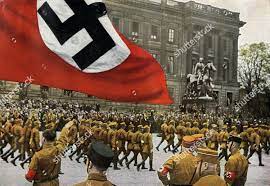
The Nazi Cult of Motherhood – Women were told to be good mothers and rear pure-blooded Aryan children. They were encouraged to produce many children.
The Art of Propaganda – The Nazi regime used language and media with care and often to great effect. They used films, pictures, radio, posters, etc., to spread hatred for Jews.
Crimes Against Humanity – People saw the world through Nazi eyes and spoke the Nazi language. At times even the Jews began to believe in the Nazi stereotypes about them.
Knowledge about the Holocaust – It was only after the war ended that people came to know about what had happened. The Jews wanted the world to know about the atrocities and sufferings they had endured during the Nazi killing operations. They just wanted to live, even if it was for a few hours, to tell the world about the Holocaust.
Forest Society and Colonialism
- Books Name
- Learn with me Social Science Book
- Publication
- Learn with me publication
- Course
- CBSE Class 9
- Subject
- Social Science
Forest Society and Colonialism
- Changes in Forest Societies under Colonialism
- Location of Bastar people
- Bastar Rebellion
- Forest Rebellion in Java
- World Wars and Deforestation.
Relationship Between Forest and Livelihoods
Forests give us a mixture of things to satisfy our different needs — fuel, fodder, leaves, trees suitable for building ships or railways, trees that can provide hardwood.
Forest products like roots, fruits, tubers, herbs are used for medicinal purposes, wood for agricultural implements like yokes, ploughs, etc.
Forests provide shelter to animals and birds. They also add moisture to the atmosphere.
Rainfall is trapped in forest lands.
Foresters and villagers had very different ideas of what a good forest should look like.
The forest department wanted trees which were suitable for building ships or railways.
They needed trees that could provide hardwood and were tall and straight. So particular species, like teak and sal, were promoted and others were cut.
The new forest laws meant severe hardship for villagers across the country. After the Act (Forest Act), all their everyday practices, cutting wood for their houses, grazing their cattle, collecting fruits and roots, hunting and fishing became illegal.
People were now forced to steal wood from the forests, and if they were caught they were at the mercy of the forest guards who would take bribes from them.
Women who collected fuelwood were especially worried. It was also common for police constables and forest guards to harass people by demanding free food from them.
Deforestation: Deforestation is cutting down of trees indiscriminately in a forest area. Under colonial rule, it became very systematic and extensive.
Why Deforestation?
As the population increased over the centuries and the demand for food went up, peasants extended the boundaries of cultivation by clearing forests.
The British encouraged the production of commercial crops like jute, sugar, wheat, and cotton for their industries as raw material.
The British thought that forests were unproductive land as they yielded no revenue nor agricultural produce. Cultivation was viewed as a sign of progress.
Oak forests in England were disappearing. There was no timber supply for the shipbuilding industry. Forest resources of India were used to make ships for the Royal Navy.
The spread of railways required two things: land to be cleared to lay railway tracks, wood as fuel for locomotives and for railway line sleepers.
Large areas of natural forests were cleared for tea, coffee, and rubber plantations. Thus, the land was given to planters at cheap rates.
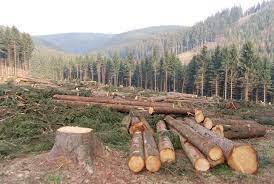
Changes in Forest Societies Under Colonialism
Shifting Cultivators: Forest management had a great impact on shifting cultivators. In shifting cultivation parts of the forest are cut and burnt in rotation. European foresters regarded this practice as harmful for the forests. They felt that such land could not be used for growing trees for railway timber and was dangerous while being burnt as it could start a forest fire. This type of cultivation also made difficult for the government to calculate taxes.
Nomadic and Pastoralist Communities: Nomadic and pastoralist communities were also affected by changes in forest management. Their traditional customary grazing rights were taken away and their entry into the forests was restricted. Passes were issued to them which had details of their entry and exit into and out of the forests. The days and hours they could spend in the forest were also restricted. This was in contrast to the earlier system that allowed them unrestricted entry into forests.
Pastoralists had to lessen the number of cattle in their herds which reduced their income. Now they were deprived of this additional income. Some pastoralists even had to change their lifestyle, leave pastoralism and work in mines, plantations, factories. Some were branded as the ‘criminal tribes’.
Firms Trading in Timber/Forest Products: Firms trading in timber products were given the sole trading rights to trade in the forest products of particular areas. They made huge profits and became richer. The entire timber and forest trade passed on to them. They became powerful and began to cut down trees indiscriminately.
Plantation Owners: Plantation owners found that more and more forest land could be cleared for plantations. The British had made it very clear that their system of forestry would be scientific forestry, i.e., plantations. Plantation owners began to reap profits as the British government gave large areas of forest land to European planters.
Kings/British Officials Engaged in Shikar: The Kings/British officials engaged in shikar found that now the villagers were prohibited from entering the forests. They had the forest and wild animals to themselves. Hunting animals became a big sport for them. Thus, hunting increased to such an extent that various species became almost extinct.
Important Dates
1600: Approximately one-sixth of India’s landmass was under cultivation. The population of Java was 3.4 million.
1700-1995: 9.3% of the world’s total area was cleared for industrial uses, cultivation pastures and fuel wood.
1770: Kalanga uprising which was suppressed.
1850: The spread of Indian Railways.
1864: The Indian Forest Service was set up.
1865: The Indian Forest Act was formulated.
1878: The Indian Forest Act was amended and divided forests into Reserved, Protected and Village forests.
1890: Surontiko Samin started a movement against the state ownership of forests.
1899-1908: Terrible famines.
1910: Rebellion in the kingdom of Bastar.
1880-1920: India’s cultivated area rose by 6.7 million hectares. Terrible famines.
1946: The length of railway tracks laid by now was over 765,000 km.
1980: Introduction of scientific forestry and restriction imposed on the forest communities resulted in many conflicts.
New Trades, New Employments and New Services
- Books Name
- Learn with me Social Science Book
- Publication
- Learn with me publication
- Course
- CBSE Class 9
- Subject
- Social Science
Location of Bastar and Believe of the People of Bastar
Bastar is located in the southernmost part of Chhattisgarh and borders Andhra Pradesh, Odisha, and Maharashtra. The central part of Bastar is on a plateau.
A number of different communities live in Bastar such as Maria and Muria Gonds, Dhurwas, Bhatras and Halbas. They speak different languages but share common customs and beliefs.
The people of Bastar believed that each village was given its land by the Earth, and in return, they had to look after the earth by making some offerings at each agricultural festival. They show respect to the spirits of the river, the forest and the mountain.
Since each village knows where its boundaries lie, the local people look after all the natural resources within that boundary. If people from a village want to take some wood from the forests of another village, they pay a small fee called devsari, Land or man in exchange.
Some villages also protect their forests by engaging watchmen and each household contributes some grain to pay them. Every year there is one big hunt where the headmen of villages meet and discuss issues of concern, including forests.
Causes for Bastar Rebellion
When the colonial government proposed to reserve two-thirds of the forest in 1905 and stop shifting cultivation, hunting and collection of forest produce, the people of Bastar were very worried.
Some villages were allowed to stay on in the reserved forests on the condition that they worked free for the forest department in cutting and transporting trees, and protecting the forest from fire. So, these came to be known as Forest Villages.
People of other villages were displaced without any notice or compensation. Villagers had been suffering from increased land rents and frequent demands for free labour and goods by colonial officials.
Then the terrible famines came in 1899-1900 and again in 1907-1908. Rebellion became inevitable.
Results of the Bastar Rebellion
In a major victory for the rebels, work on the reservation was temporarily suspended.
The area to be reserved was reduced to roughly half of that planned before 1910.
Causes for Forest Rebellion in Java
The Dutch wanted timber from Java to build ships. They banned the practice of shifting cultivation. The Dutch enacted forest laws in Java, restricting villagers’ access to forests.
Now wood could only be cut for specified purposes like making riverboats or constructing houses, and only from specific forests under close supervision.
Villagers were punished for grazing their cattle in young stands, transporting wood without a permit, or traveling on forest roads with horse carts or cattle.
As in India, the need to manage forests for shipbuilding and railways led to the introduction of a forest service by the Dutch in Java.
The Dutch first imposed rents on land being cultivated in the forest and then exempted some villages from these rents if they worked collectively to provide free labour and buffaloes for cutting and transporting timber. This was known as the blandongdiensten system.
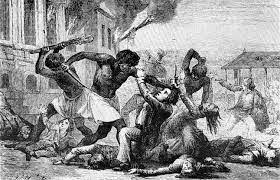
Forest Rebellion in Java or Saminist Movement in Java
In the 1890s, Surontiko Samin a teak forest villager began questioning state ownership of the forest. He argued that the state had not created the wind, water, earth, and wood, so it could not own it.
Soon a widespread movement developed. Amongst those who helped to organize it was Samin’s sons-in-law.
By 1907,3,000 families were following his ideas. Some of the Sam insists protested by lying down on their land when the Dutch came to survey it, while others refused to pay taxes or fines or perform labour.
World Wars and Deforestation
The First World War and the Second World War had a major impact on forests. In India, working plans were abandoned at this time, and the forest department cut trees freely to meet British war needs.
In Java, just before the Japanese occupied the region, the Dutch followed a ‘scorched earth’ policy, destroying sawmills, and burning huge piles of giant teak logs so that they would not fall into Japanese hands.
The Japanese then exploited the forests recklessly for their own war industries, forcing forest villagers to cut down forests.
After the war, it was difficult for the Indonesian forest service to get this land back. As in India, people’s need for agricultural land had brought them into conflict with the forest department’s desire to control the land and exclude people from it.
Causes of large scale deforestration during colonial rule :-
- Expansion of cultivation for food grains
- Make way for tea, coffee and rubber plantations
- To enhance the state revenue by converting forest land into agricultural land
- The spread of railways
- For Imperial shipbuilding
WHY DEFORESTATION :-
The disappearance of forests is referred to as deforestation.The process of cutting trees on a large scale began many centuries ago. Under the rule of the British i.e. colonial rule it became more systematic. Let us see some of the causes of deforestation in India under colonial rule.
LAND FOR CULTIVATION :-
The British encouraged the production of commercial crops like jute, sugar, wheat and cotton as demands for these crops increased in Europe where raw materials were required for industrial production. Secondly, the colonial state thought that forests were unproductive and more and more forest area under cultivation.
WOOD TO MAKE ENGLISH SHIPS :-
By the early 19th century, oak forests in England was disappearing and timber was needed by the Royal Navy to make ships. Search parties were sent to India and trees were being cut on a large scale and vast quantities of timber was exported from India to England.
SLEEPERS ON THE TRACKS :-
The spread of railways from the 1850s created a new demand. To run locomotives, wood was needed as fuel, and to lay railway lines sleepers were essential to hold the tracks together . (Sleepers Wooden Planks laid across railway tracks; they hold the tracks in position) The contractors appointed by the British Government began cutting trees indiscriminately.
PLANTATIONS :-
Large areas of natural forests were also cleared to make way for tea, coffee and rubber plantations to meet Europe’s growing need for these commodities. The British government gave vast areas to European planters at cheap rates to clear forests and plant tea or coffee.
Forest management :-
A system of cuttingtrees controlled by the forest department,in which old trees are cut and new onesplanted in straight lines for British railway and Navy.
FIRST INSPECTOR GENERAL OF FORESTS IN INDIA :-
The British were worried that the use of forests by local people and the reckless felling of trees by traders would destroy forests. So, they decided to invite a German expert, DIETRICH BRANDIS, for advice , and made him the first Inspector General of Forests in India.
SCIENTIFIC FORESTRY :-
Brandis set up the Indian Forest Service in 1864. The Imperial Forest Research Institute was set up at Dehradun in 1906. The system they taught here was called SCIENTIFIC FORESTRY. Many people now, including ecologists, feel that this system is not scientific at all. In scientific forestry, natural forests which had lots of different types of trees were cut down. In their place, of tree was planted in straight rows.
THE FOREST ACT :-
The 1878 Act divided forests divided forests into three categories:-
- RESERVED,
- PROTECTED
- VILLAGE FORESTS.
The best forests were called’reserved forests. Villagers could not take anything from these forests, even for their own use. For house building or fuel , they could take wood from protected or village Forests.
Impact of Forest laws :-
After the implementation of act, almost all everyday practices of native became illegal like-Cutting wood for their houses, Hunting and Fishing, Grazing their cattle, collecting honey, Collecting fruits and roots, Collection of Mahua and other forest products.
They were forced to work instead in factories, mines and plantations, under government supervision.
Many pastoralist and nomadic communities like the Korava, Karacha and Yerukula of the Madras Presidency lost their livelihoods, Some of them began to be called ‘criminal tribes.
People were now forced to steal wood from the forests, and if they were caught, they were at the mercy of the forest guards who would take bribes from them.
It was also common for police constables and forest guards to harass people by demanding free food from them.
Women who collected fuel wood were especially worried for their safety.
HOW WERE THE LIVES OF PEOPLE AFFECTED?
Villagers wanted forests with a mixture of species to satisfy different need – fuel, fodder (food for animals) leaves. The Forest Department wanted trees which were suitable for building ships or railways. The Forest Act meant severe hardship for villagers across the country.
After the Act, all their everyday practices- cutting wood for their houses, grazing their cattle, collecting fruits and roots, hunting fishing – became illegal. People were now forced to steal wood from the forests, and if they were caught, they were at the mercy of forest guards who would take bribes from them.
SHIFTING CULTIVATION :-
One of the major impacts of European colonialism was on the practice of shifting cultivation or swidden agriculture. In shifting cultivation, parts of the forest are cut and burnt in rotation.
Seeds are sown in the ashes after the first monsoon rains, and the crop is harvested by October-November. Such plots are cultivated for a couple of years and then left fallow for 12 to 18 years for the forest to grow back.
European foresters regarded this practice as harmful for the forests and decided to ban shifting cultivation.
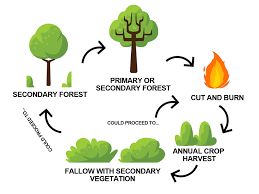
WHO COULD HUNT ?
While the forest laws deprived people of their customary rights to hunt, hunting of big animals became a sport.
The British saw large animals as signs of a wild, primitive and savage society. They believed that by killing dangerous animals the British would civilize India.
Over 80,000 tigers, 150,000 leopards and 200,000 wolves were killed for reward in the period 1875-1925.
A British administrator, George Yule, killed 400 tigers. Initially certain areas of forests were reserved for hunting.
REBELLION IN THE FOREST :-
In many parts of India, and across the world, forest communities rebelled against the changes that were being imposed on them. We will now discuss in detail one such rebellion which took place in the kingdom of Bastar in 1910.
THE PEOPLE OF BASTAR :-
Bastar is located in the southernmost part of Chhattisgarh and borders Andhra Pradesh, Orissa and Maharashtra. A number of different communities live in Bastar such as Maria and Muria Gonds, Dhurvas, Bhatras and Halbas. The people of Bastar believed that each village was given its land by the Earth and in return they look after the Earth. Each village knew its boundary and looked after the natural resources and also protect their forests by engaging watchmen.
THE FEARS OF THE PEOPLE :-
When the colonial government proposed to reserve two- thirds of the forest in 1905, and stop shifting cultivation, hunting and collection of forest produce, the people of Bastar were worried. People began to gather and discuss these issues. The initiative was taken by the Dhurwas of the Kanger Forest. Although there was no single leader, many people speak of Gunda Dhur, as an important figure in the movement. People of other villages were also invited to join the rebellion. The rebellion was crushed by the British.
FOREST TRANSFORMATIONS IN JAVA :-
Let us now go to another part of Asia, Indonesia, and see what was happening there over the same period. JAVA in INDONESIA is where the Dutch (the Dutch are the people who live in the Netherlands) started forest management.
Like the British, they wanted timber from Java to build ships and sleepers. There were many communities in Java living in the mountains and practising shifting cultivation.
THE WOODCUTTERS OF JAVA :-
The KALANGS of Java were a community of skilled forest cutters and shifting cultivators. They were so trained that in 1755 when the Mataram kingdom divided of Java divided , the 6000 Kalang families were equally divided between the two kingdoms. When the Dutch began to gain control over the forests in the 18th century, they tried to make the Kalangs work under them.
DUTCH SCIENTIFIC FORESTRY :-
The Dutch made forest laws in Java, just like the British had made in India. They did not allow the villagers to enter the forest. Now wood could only be cut for specified purposes like making river boats or constructing houses. Villagers were punished for grazing cattle taking wood from the forests.
SAMIN’S CHALLENGE :-
Around 1890, Surontiko Samin of Randublatung village, began questioning state ownership of the forest. He argued that the state had not created the wind, water, earth and wood, and so it could not own it .Soon a widespread movement developed. By 1907, 3000 families were following his ideas.
WAR AND DEFORESTATION :-
The First World War and the Second World War had a major impact on forests. The forest department in India cut trees freely to meet British war needs.
In Java, just before the Japanese occupied the region, the Dutch followed “a scorched earth” policy, destroying sawmills, and burning huge piles of giant teak logs so that they would not fall into Japanese hands.
The Japanese forced the forest villagers to cut down forests and used the products for their own war industries. Many villagers used this opportunity to expand cultivation in the forest.
NEW DEVELOPMENTS IN FORESTRY :-
Since the 1980s, governments across Asia and Africa realised that scientific forestry and keeping the forest people away from the forests has led to destruction of forests.
The government recognised that in order to protect forests involvement of the forest people is very essential. In many cases, across India, from Mizoram to Kerala, dense forests have survived only because of the protection given by the villages.
Some villages have been keeping a watch over their own forests, with each household taking it in turns, instead of leaving it to the forest guards
Pastoralists in the Modern World
- Books Name
- Learn with me Social Science Book
- Publication
- Learn with me publication
- Course
- CBSE Class 9
- Subject
- Social Science
Pastoral Nomads and their Movements
In the mountains
- In the 19th century, Gujjar Bakarwals of Jammu and Kashmir migrated there in search of pastures for their animals.
- The Gaddi shepherds of Himachal Pradesh followed a cycle of seasonal movement.
- The Gujjar cattle herders in Garhwal and Kumaon in the east came to dry forests of the bhabar in winter and went to high meadows called the bugyals in summer.
- The Himalayan communities of Bhotiyas, Sherpas and Kinnuaris followed patterns of cyclical movements between summer and winter pastures.
- In the nineteenth century, Gujjar Bakarwals of Jammu and Kashmir migrated to the mountains in search of pastures for their animals.
- The Gujjar cattle herds from the further east came down to the dry forests of the bhabar in the winter and went up to the high meadows – the bugyals – in summer.
- This pattern of cyclical movement between summer and winter pastures was typical of many pastoral communities of the Himalayas, including the Bhotiyas, Sherpas and Kinnauris.
On the Plateaus, Plains and Deserts
- Among the pastoralists that lived in plateaus, plains and deserts in India, the Dhangars of Maharashtra are a significant one.
- The seasonal rhythm of their movement was defined by alterations of the monsoon and dry season.
- Another important group were the Banjaras in the villages of Uttar Pradesh, Punjab, Rajasthan, Madhya Pradesh and Maharashtra.
- The Raikas lived in the deserts of Rajasthan where rainfall was meagre and uncertain.
- Pastoralists were also found in the plateaus, plains and deserts of India. In Maharashtra, Dhangars were an important pastoral community who were mostly, shepherds, blanket weavers, and buffalo herders.
- During the monsoon, they used to stay in the central plateau of Maharashtra. By October the Dhangars harvest their bajra and move to the west.
- After they reached Konkan, they were welcomed by Konkani peasants. After the kharif harvest was cut, the fields had to be fertilised and made ready for the rabi harvest.
- In the state of Karnataka and Andhra Pradesh, the dry central plateau was covered with stone and grass, inhabited by cattle, goats and sheepherders called Gollas herded cattle.
- The Kurumas and Kurubas reared sheep and goats and sold woven blankets. During the dry season, they moved to the coastal tracts and left when the rains came.
- Banjaras were yet another well-known group of graziers, found in the villages of Uttar Pradesh, Punjab, Rajasthan, Madhya Pradesh and Maharashtra.
- Raikas lived in the deserts of Rajasthan. During the monsoons, the Raikas of Barmer, Jaisalmer, Jodhpur and Bikaner stayed in their villages, where pasture was available.
- By October, they moved out in search of other pasture and water and returned again during the next monsoon.
- Pastoral groups life was sustained by a host of factors. They had to judge how long the herds could stay in one area, and where they could find water and pasture. They needed to calculate the timing of their movements and ensure that they could move through different territories.
- They had to set up a relationship with farmers on the way so that the herds could graze in harvested fields and manure the soil.
Colonial Rule and Pastoral Life
- The changes were implemented by the British in the following ways:
- First, the colonial rule wanted to transform all grazing lands into agricultural farms.
- Second, various Forest Acts were being enacted in different provinces by the mid-19th century.
- Third, British officials held suspicions about nomads.
- Fourth, the colonial government collected tax from all possible sources to expand its income through revenue.
- Land revenue was one of the main sources for finance of the colonial state. So, the colonial government wanted to transform all grazing lands into cultivated farms through which they could expand cultivation and increase its revenue collection. All uncultivated land was seen as ‘waste land’. From the mid-nineteenth century, Waste Land Rules were enacted in various parts of the country. Under these rules, uncultivated lands were taken over and given to select individuals.
- By the mid-nineteenth century, various Forest Acts were being enacted in different provinces. According to these Acts, forests which produced commercially valuable timber like deodar or sal were declared ‘Reserved’ and other forests were classified as ‘Protected’. These Forest Acts changed the lives of pastoralists as they were prevented from entering many forests.
- British officials were suspicious of nomadic people. The colonial government wanted to rule over a settled population. In 1871, the colonial government in India passed the Criminal Tribes Act. By this Act many communities of craftsmen, traders and pastoralists were classified as Criminal Tribes. They were stated to be criminals by nature and birth.
- Taxation was imposed on land, on canal water, on salt, on trade goods, and even on animals. In most pastoral tracts of India, grazing tax was introduced in the mid-nineteenth century. In the decades between the 1850s and 1880s, the right to collect the tax was auctioned out to contractors. By the 1880s the government began collecting taxes directly from the pastoralists
How did these changes affect the Lives of Pastoralists?
- After imposition of restrictions on pastoral movements, quality of pastures declined in grazing lands that were continuously used.
- This led to shortage of forage for animals and deterioration of animal stock.
- Due to these measures, there was a shortage of pastures. When grazing lands were taken over and turned into cultivated fields, the available area of pastureland declined. As pasturelands disappeared under the plough, the existing animal stock had to feed on whatever grazing land remained. When restrictions were imposed on pastoral movements, grazing lands came to be continuously used and the quality of pastures declined. This, in turn, created a further shortage of forage for animals and the deterioration of animal stock
How did the Pastoralists Cope with these Changes?
- Pastoralists reduced the number of cattle in their herds as there was insufficient pasture to feed them.
- After the partition, many migrated to Haryana.
- Richer pastoralists settled down in their newly bought lands and gave up their nomadic life over the years.
- The poorer pastoralists borrowed money from moneylenders in exchange of their cattle and sheep or worked in fields or small towns as labourers.
- Pastoralists reacted to these changes in various ways. They reduced the number of cattle and some discovered new pastures. After 1947, the new political boundaries between India and Pakistan stopped the camel and sheep herding Raikas, to graze their camels on the banks of the Indus. Over the years, some richer pastoralists bought land and settled down, giving up their nomadic life. Some became peasants by cultivating land, others indulged in trading. On the other hand, poor pastoralists, borrowed money from moneylenders to survive. They still continued to survive and in many regions, their numbers have expanded. In many other parts of the world, new laws and settlement patterns forced pastoral communities to alter their lives.
Pastoralism in Africa
- Bedouins, Berbers, Maasai, Somali, Boran and Turkana are some communities that depend on some form of pastoral activity for survival.
- Some engage in trade and transport while others combine pastoral activity with agriculture and other odd jobs.
- Due to imposition of law and regulations, their lands had been taken away and movement was restricted, which affected their lives during droughts and reshaped their social relationships.
Where have the grazing lands gone?
- In 1885, Maasailand was divided into two parts: British Kenya and German Tanganyika.
- The Maasai lost 60% of the lands and became confined to an arid zone with uncertain rainfall and poor pastures.
- The loss of such fine grazing lands and water resources created pressure on the small areas of land that the Maasai were bound in.
The Borders are Closed
- The lives of pastoralists and their pastoral and trading activities were affected by new territorial boundaries and restrictions.
- In the nineteenth century, African pastoralists could move over vast areas in search of pastures. But, from the late nineteenth century, the colonial government began imposing various restrictions on their mobility. White settlers and European colonists saw pastoralists as dangerous and savage. The new territorial boundaries and restrictions imposed on them suddenly changed the lives of pastoralists, which adversely affected both their pastoral and trading activities.
When Pastures Dry
- A large number of Maasai cattle died of starvation and disease during drought as they were no longer shifted to new pastures.
- Pastoralists’ lives were affected by drought everywhere. That is why, traditionally, pastoralists move from place to place to survive bad times and avoid crises. But from the colonial period, the Maasai were bound down to a fixed area, confined within a reserve, and prohibited from moving in search of pastures. As the area of grazing lands shrank, the adverse effect of the droughts increased in intensity.
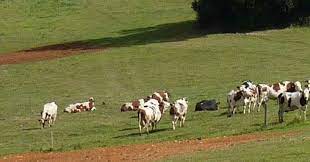
Not All were Equally Affected
- The British appointed chiefs for different sub-groups of Maasai and they were made responsible for the affairs of the tribe.
- Raiding and warfare was restricted and the traditional authority of the elders and warriors was affected adversely.
- The poor pastoralists who depended entirely on livestock did not have resources to overcome tough times like war and famine.
Not All were Equally Affected
In Maasailand, not all pastoralists were equally affected by the changes in the colonial period. In pre-colonial times Maasai society was divided into two social categories – elders and warriors. The elders formed the ruling group and met in periodic councils to decide on the affairs of the community and settle disputes. The warriors consisted of younger people, mainly responsible for the protection of the tribe and defended the community and organised cattle raids.
The British introduced a series of measures that had important implications, to administer the affairs of the Maasai. They appointed chiefs of different sub-groups of Maasai, who were made responsible for the affairs of the tribe. Restrictions were also imposed on raiding and warfare. These chiefs managed to survive the devastations of war and drought.
But the life history of the poor pastoralists was different. In times of war and famine, they lost nearly everything. They had to go looking for work in the towns. Some used to work as charcoal burners, and some did odd jobs to earn their living.
The social changes in Maasai society occurred at two levels. First, the traditional difference based on age, between the elders and warriors, was disturbed, though it did not break down entirely. Second, a new distinction between the wealthy and poor pastoralists developed.
Conclusion
Pastoral communities in different parts of the world are affected in different ways by changes in the modern world. Their pattern of movement was affected by new laws and new borders. Pastoralists find it difficult to move in search of pastures and grazing becomes difficult. During the time of drought, cattle die in large numbers. Yet, pastoralists do adapt to new times. They change the paths of their annual movement, reduce their cattle numbers, press for rights to enter new areas, exert political pressure on the government for relief, subsidy and other forms of support and demand a right in the management of forests and water resources.

 Learn with me publication
Learn with me publication
